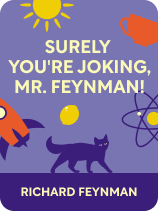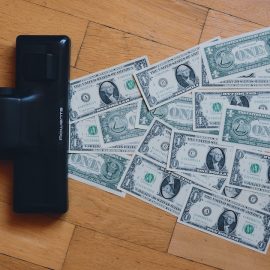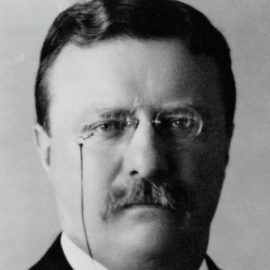

This article is an excerpt from the Shortform book guide to "Surely You're Joking, Mr. Feynman!" by Richard Feynman. Shortform has the world's best summaries and analyses of books you should be reading.
Like this article? Sign up for a free trial here.
What did Richard Feynman do before he taught at Caltech? Why was Caltech such a good fit for him?
For Richard Feynman, Caltech was home—academically speaking. His career took a few turns before he settled in at Caltech. And, he grew in his understanding of what it meant—for him—to be a teacher. He tells the story in his memoir Surely You’re Joking, Mr. Feynman!
Continue reading to learn a bit about Feynman’s time at Caltech and the path he took to get there.
Back to Academia
For Richard Feynman, Caltech wasn’t even on the radar early on in his career. After the intense pace and pressure of working on the Manhattan Project, he had to readjust to the life of an ordinary research professor. Feynman describes his difficulties finding his scientific inspiration again as he reentered the academic world. First, he had to learn what it meant to be a teacher before finding the place that would become his academic home and doing the work that would earn his Nobel Prize.
Feynman’s first position after leaving Los Alamos was a professorship at Cornell University. There, he had to start his life over, having lost his wife and his four-year wartime job. He had a hard time motivating himself to do research, so, instead, he focused on teaching. Feynman says that, since he was young and inexperienced, he didn’t appreciate how much energy went into devising lessons and classes. When it came to doing research, he felt like a burned-out fraud, when in fact he was making great strides in honing his teaching skills. It was only when a close friend told him as much that he stopped feeling guilty about not producing the next breakthrough in physics.
(Shortform note: The feeling of inadequacy Feynman describes is now commonly referred to as imposter syndrome, which was first identified by psychologists Pauline Clance and Suzanne Imes in 1978. In Lean In, Sheryl Sandberg says that to fight imposter syndrome, you have to acknowledge that your experience is a distortion of reality, and you should remind yourself of past successes in order to reframe your thinking. While Clance, Imes, and Sandberg all discuss imposter syndrome as it relates to women, it’s now understood to affect high-achieving people of every gender, leading to fears of failure, rejection, and simply “not being good enough.”)
Feynman recalls having a life-changing inspiration after several universities offered him prestigious research positions that he felt overstated his talents: You’re not responsible for living up to other people’s expectations. Once he accepted that it wasn’t his job to live up to some glorified academic ideal, he gave himself permission to play—in other words, to direct his research to questions in physics that he found personally interesting, instead of what might be considered “important” by the science community at large. Once he made that shift in his attitude, he found that his work became fun again. Research ideas began to flow once more.
(Shortform note: Feynman’s recollections present a classic example of unhappily trying to measure up to societal expectations without realizing at first to what extent those expectations are self-imposed. In The Gifts of Imperfection, Brené Brown describes this as the unhealthy effect of comparing ourselves to others, bred from a drive to both compete and conform with others in our social group. While Feynman found that rejecting self-comparison unlocked his creativity, Brown suggests that tapping into your creativity first can help defuse your need to compare yourself to others. Creativity does this by focusing on your individuality and highlighting what unique qualities you have rather than those you and others have in common.)
The Caltech Years
Feynman started looking elsewhere for work, mainly because the weather at Cornell was insufferably cold. After spending a sabbatical year in Brazil, Feynman took a position at the California Institute of Technology (Caltech), which he would make his academic home for the rest of his life. Intellectually, it suited him well. Feynman claims that he could simply walk across campus, and colleagues would run up to him with news of breaking discoveries. Feynman grew so stressed about offers he’d receive from other universities that he decided never to consider working anywhere else, no matter what salary or other perks another institution might tempt him with.
(Shortform note: Caltech played a pivotal role in the US’s scientific and technological advancement during the 1950s. In addition to the theoretical work done by Feynman and others, Caltech was the birthplace of the Jet Propulsion Laboratory, which came under the auspices of NASA after the successful launch of the first US satellite, Explorer 1, in 1958. In the field of astronomy, Fritz Zwicky used Caltech’s Palomar Observatory to create a catalog of 35,000 galaxies, greatly expanding our understanding of the universe, while the National Geographic Society conducted a complete photographic survey of the entire northern sky. Meanwhile, Caltech’s electrical engineering department did pioneering work on electronic circuit design.)
The climax of Feynman’s academic career was the Nobel Prize he won in 1965 for his work in quantum electrodynamics. Instead of being elated by the award, Feynman says that at first, he tried to turn it down. He was annoyed by the sudden attention and put off by the pomp and circumstance that went along with receiving the award. In the end, he was persuaded that declining a Nobel would stir up a bigger furor than simply accepting it. Nevertheless, Feynman complains about the celebrity status that the Nobel conferred. After winning the prize, he could no longer simply be “Professor Feynman.” Now, he had to live with being a star of the scientific community.
(Shortform note: Feynman shared the 1965 Nobel Prize in Physics with Julian Schwinger and Sin-Itiro Tomonaga for work on the development of quantum electrodynamics, which deals with the interaction between electromagnetic fields and charged particles such as electrons. Feynman’s best-known contribution was the creation of a graphical diagram system that allows physicists to visualize complex interactions between particles, simplifying the math and making it easier to calculate the probability of those interactions occurring.)
| Richard Feynman’s Family In his memoir, Feynman says little about his family after the death of his first wife, Arline. He was married to his second wife, Mary Louise Bell, from 1952-1958. In Quantum Man, biographer Lawrence M. Krauss relates Bell’s complaint to their divorce judge that Feynman did nothing but work math problems day and night. Feynman then married Gweneth Howarth in 1960 after she moved from England to the US, and they remained married until his death from cancer in 1988. Gweneth Feynman passed away in 1990. Richard and Gweneth Feynman had two children: Carl, born in 1962, and Michelle, born in 1968. Carl Feynman studied at MIT and pursued a career in computer engineering. Michelle Feynman became a freelance photographer and edited several collections of her father’s work, including The Quotable Feynman and Perfectly Reasonable Deviations From the Beaten Track. |

———End of Preview———
Like what you just read? Read the rest of the world's best book summary and analysis of Richard Feynman's "Surely You're Joking, Mr. Feynman!" at Shortform.
Here's what you'll find in our full Surely You're Joking, Mr. Feynman! summary:
- The memoir of award-winning scientist Richard Feynman
- A walk through Feynman's life, from college to winning the Nobel Prize
- Why enjoying life is just as valuable as your education






